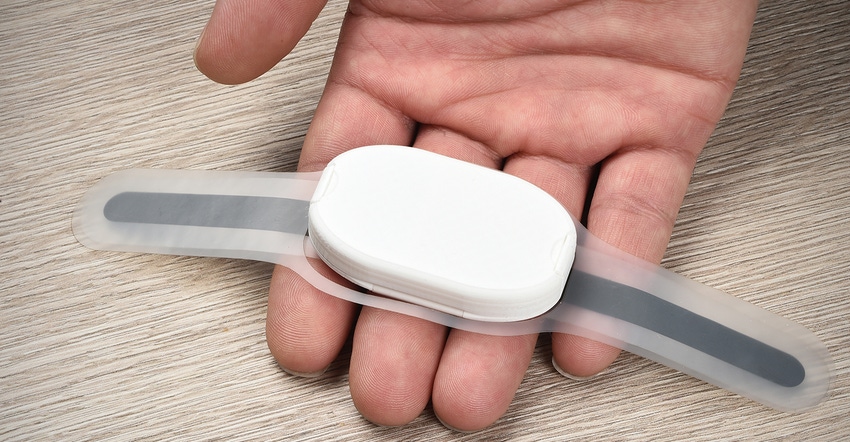Researchers have engineered a nano-cellulose biomaterial that replicates the properties of plastic substrates in medical wearables.
May 19, 2023

For the past 50 or so years, one of the overarching trends in the medical technology space has been the advent of plastic single-use medical devices. Now, the VTT Technical Research Center of Finland is flipping the script, at least when it comes to medical wearables. It has developed a recyclable electrocardiogram (ECG) patch made of biomaterials designed to replace plastics in this and other medical wearable applications.
Conventional ECG patches are composed of electrical components on a plastic substrate to monitor heart conditions. According to VTT, plastics account for 25% of waste generated by hospitals, and 91% of plastics are not recycled and end up in landfills or nature. Moreover, electronic waste is forecast to rise by 38% by 2030, and the numerous small, complex parts in electronic devices make it difficult to recycle these items, said VTT. Less than 20% of electronic waste currently gets recycled, the research center added.
VTT’s ECG patch has a modular design, allowing easy removal of the electronic components for repeated re-use, said the news release. The patch itself is made of nano-cellulose — which VTT calls "cellulose e-skin" — with no plastic additives and is printed with carbon conductors and sensing electrodes. Currently, water-based casting is used as the production method in a roll-to-roll technique at pilot scale, VTT scientists Mohammad H. Behfar and Aayush Jaiswal told PlasticsToday. It is described in a paper titled, "Biodegradable Cellulose Nanocomposite Substrate for Recyclable Flexible Printed Electronics." The biggest challenge in designing the biomaterial-based patch, said VTT, was replicating the properties of plastics that are currently used to fabricate the devices.
"The tricky part is the fact that [the biomaterials] need to possess certain properties like stretchability, tear resistance, and moisture sensitivity," said Mohammad H. Behfar, senior scientist at VTT. “We’re proud to say that with cellulose e-skin, we’ve created a new film with huge potential for use in the medical industry.”
The global ECG patch and Holter monitor market was valued at $1.2 billion in 2022, according to a report from Grand View Research, and is expected to expand at a compound annual growth rate of 20% through 2030. The growing prevalence of atrial fibrillation, aging, and rising incidence of cardiovascular disorders increasingly are driving demand for these products.
Because of its physical properties and sustainability credentials, the cellulose e-skin could have applications beyond medical wearables. “The film is strong, flexible, transparent, breathable, and has good printability,” said Research Scientist Aayush Jaiswal. “Other potential applications could be, for instance, in printed energy storage and harvesting devices.”
For now, though, VTT is seeking partners who are interested in developing industrial-scale manufacturing of sustainable wearable electronics. While it is more costly than conventional technologies, as one would expect at the R&D stage, moving toward commercialization with optimized processing at high volume will balance the cost versus impact, according to Behfar and Jaiswal. "We have been developing technologies to enable large-scale nanocellulose film production [at VTT] for almost a decade now," they added.
About the Author(s)
You May Also Like


